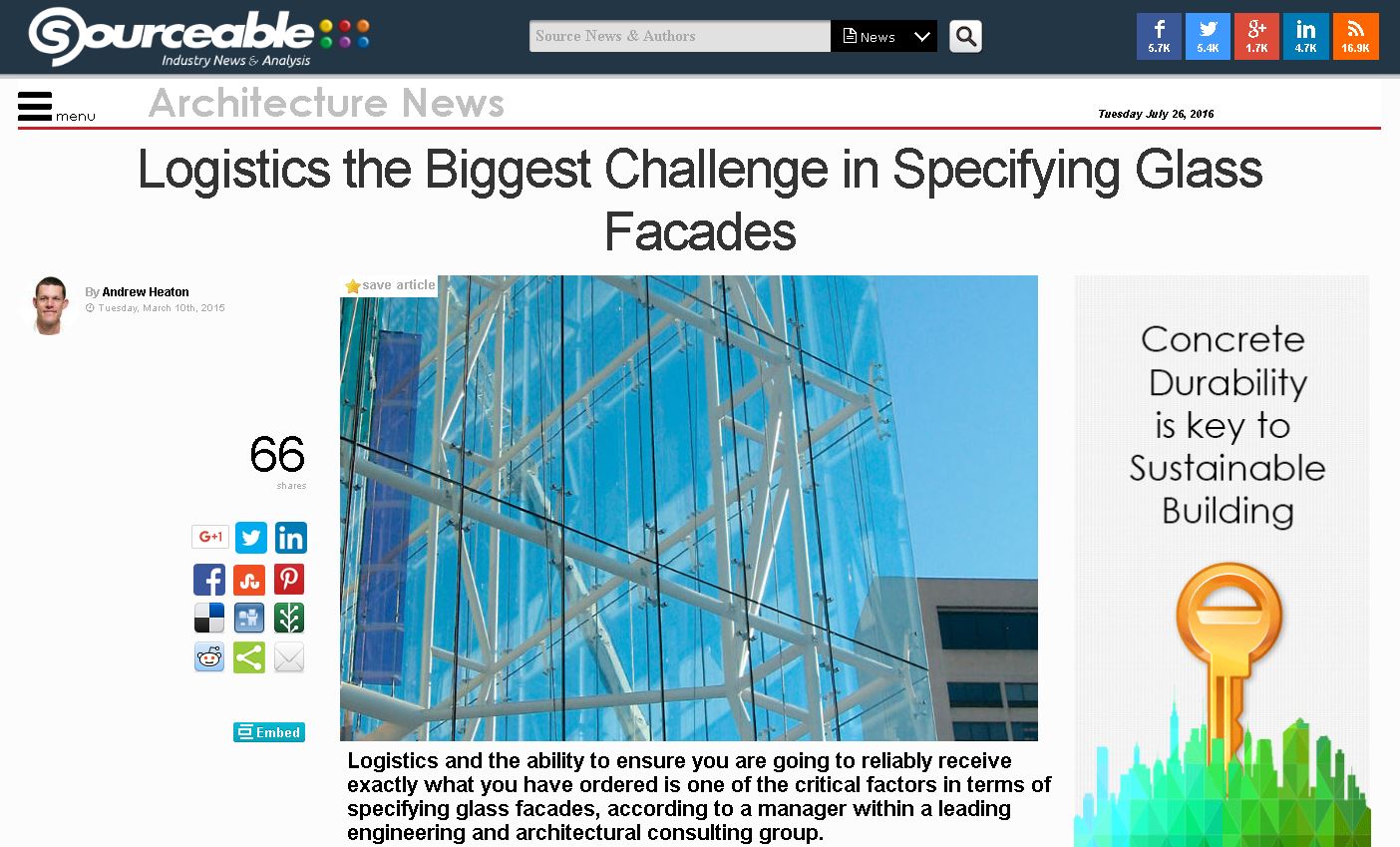Logistics the Biggest Challenge in Specifying Glass Façades
Sourceable gains an industry viewpoint of the importance of Logistics in relation to Façade Engineering and Building Physics design from Darren O’Dea, Inhabit’s Building Physics practice lead.
Logistics the Biggest Challenge in Specifying Glass Façades
Logistics and the ability to ensure you are going to reliably receive exactly what you have ordered is one of the critical factors in terms of specifying glass façades, according to a manager within a leading engineering and architectural consulting group.
Inhabit Building Physics (ESD) Manager Darren O’Dea said the most critical challenges involved in specifying and procuring façade materials such as glass revolved around being certain the product would arrive on time.
“Most if not all of what we are seeing [in specifying and procuring glass façades] is coming down to that sort of discussion about whether or not you can procure the materials quickly and efficiently and guarantee that they are going to arrive,” O’Dea said.
“So the main challenge today I think is is primarily a logistics component of how do I know I can get what I want to get out of the factory and have everything accounted for all incorporated into a product that I can be confident I can get to site within my time-frame and within my budget?”
A critical part of the answer, O’Dea says, revolves around choosing reputable suppliers and having a presence in the country of manufacture – something more easily done by firms with a strong multi-national presence.
He says in Inhabit’s case, for example, having people on the ground in China allows them to see what is happening on the factory floor and gain subtle insights about things such as whether or not a procurement line is actually producing as much as the supplier says it is going to produce and whether or not the supplier in question has allocated a percentage of their volume of glass to a particular project.
“We are putting people in place within the largest manufacturers on the planet in order to build up confidence that our clients at this end are going to get exactly what they procured,” O’Dea said.
Outside of logistics, O’Dea says critical considerations with regard to costing when it comes to the broader issue of specifying façades revolve around life cycle aspects such as durability and embodied energy, adding that a typical life span of a façade is more than 20 years and is tied into the cycle of major building refurbishments.
With regard to durability, he says west facing spandrels, for example, are increasingly becoming ‘hot boxes’ and experiencing very high temperatures – a phenomenon which has knock-on effects with regard to materials chosen for backpan construction and their respective guarantees (and thus cost).
Meanwhile, while embodied energy – the energy required to extract, process, transport, install and recycle or dispose of materials at the end of their life – is not often discussed, O’Dea says this is a critical consideration. For example, virgin aluminium framing can have an embodied energy of six times as much on a per kilogram basis as that of virgin steel framing.
Asked about the critical strategies which can be employed within the design to minimise the cost of façade construction without impacting upon quality or maintenance issues, O’Dea says the most important thing is to adopt a straightforward approach.
“Keep things simple, clean and modular,” he said. “The more complex a façade, the higher the maintenance and replacement cost.”
“The challenge for architects is to create character in a cost effective way, and where advanced façades are used, provide maximum impact and minimal budget and maintenance impacts. Prefabrication is also seeing some new traction on the Australian market, although likely more popular with builders from a construction cost perspective than from a design perspective.”
—————————–
The above is reproduced from the Sourceable website.
Full article here: https://sourceable.net/logistics-the-biggest-challenge-in-specifying-glass-facades
Date: 10th March 2015
Author: Andrew Heaton
Interviewed: Darren O’Dea, Inhabit.
